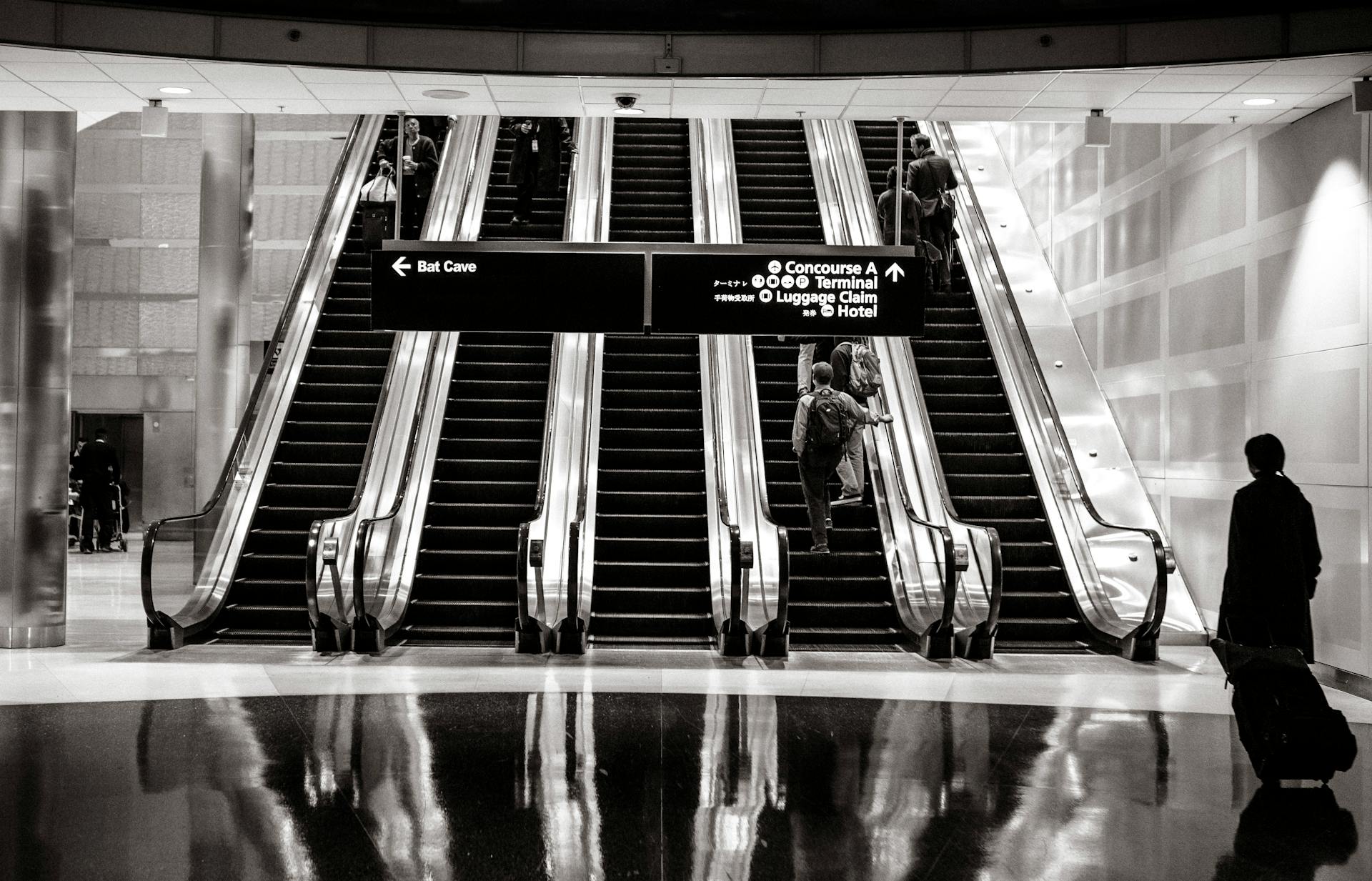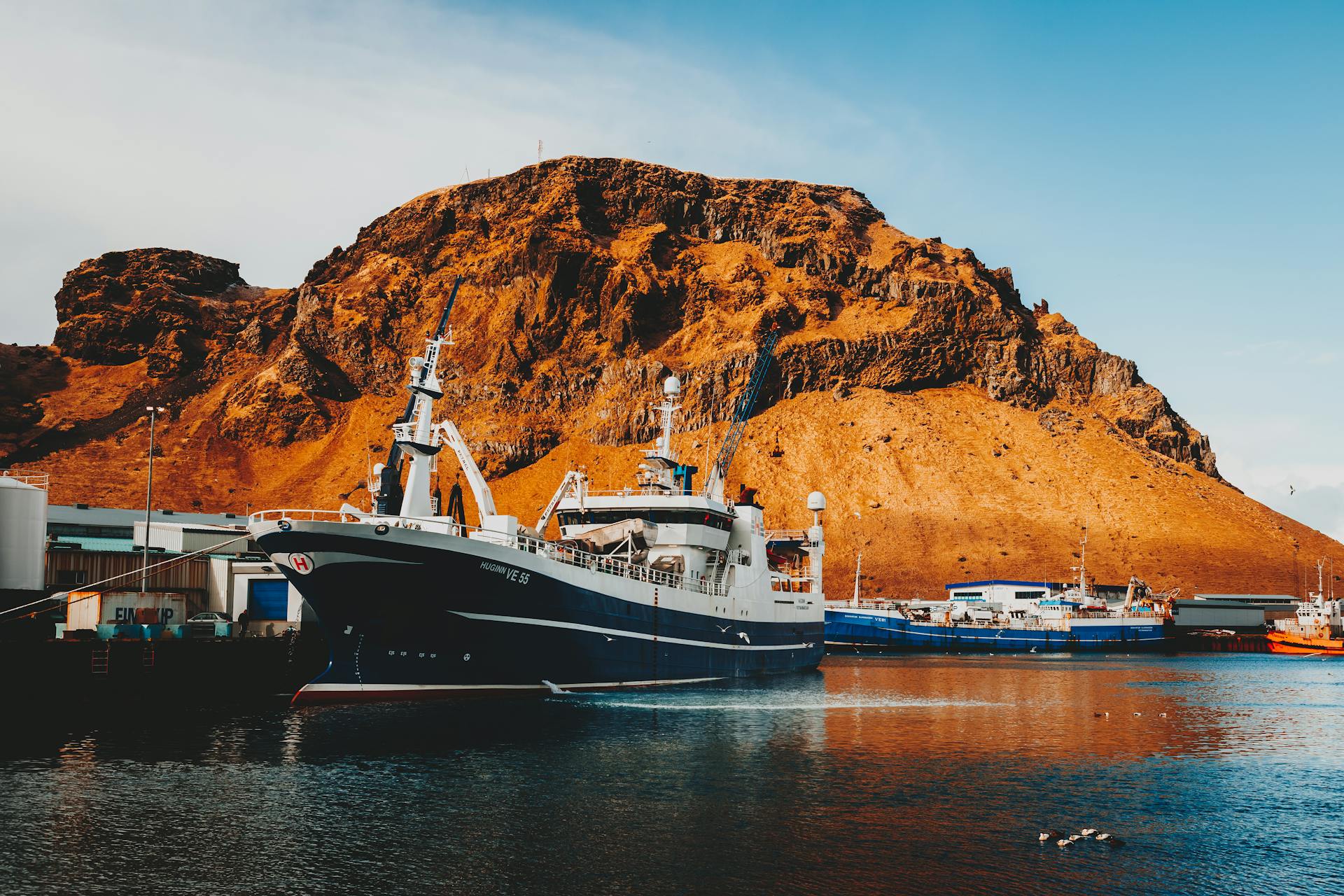
Hambantota International Port is a game-changer for southern Sri Lanka, unlocking the region's vast potential for economic growth and development.
Located in the Hambantota District, this port is strategically situated on the southern coast, providing direct access to the Indian Ocean and connecting Sri Lanka to major trade routes.
The port's massive container terminal, which spans over 1.3 million square meters, is designed to handle massive cargo ships and vessels, making it an ideal hub for international trade.
It's a massive undertaking that's expected to bring in significant revenue and create thousands of jobs in the region.
History and Development
Hambantota International Port has a complex history. The first feasibility study was conducted in June 2002 by Canadian engineering and construction firm SNC-Lavalin.
The study concluded that the port could be developed in three stages costing US$1.7 billion. It recommended a joint venture between the Sri Lanka Ports Authority and a private consortium to undertake the project under a build–own–operate–transfer arrangement.
However, the steering committee of the Ports Authority rejected the report, criticizing it for being non-comprehensive and lacking primary research.
First Feasibility Study
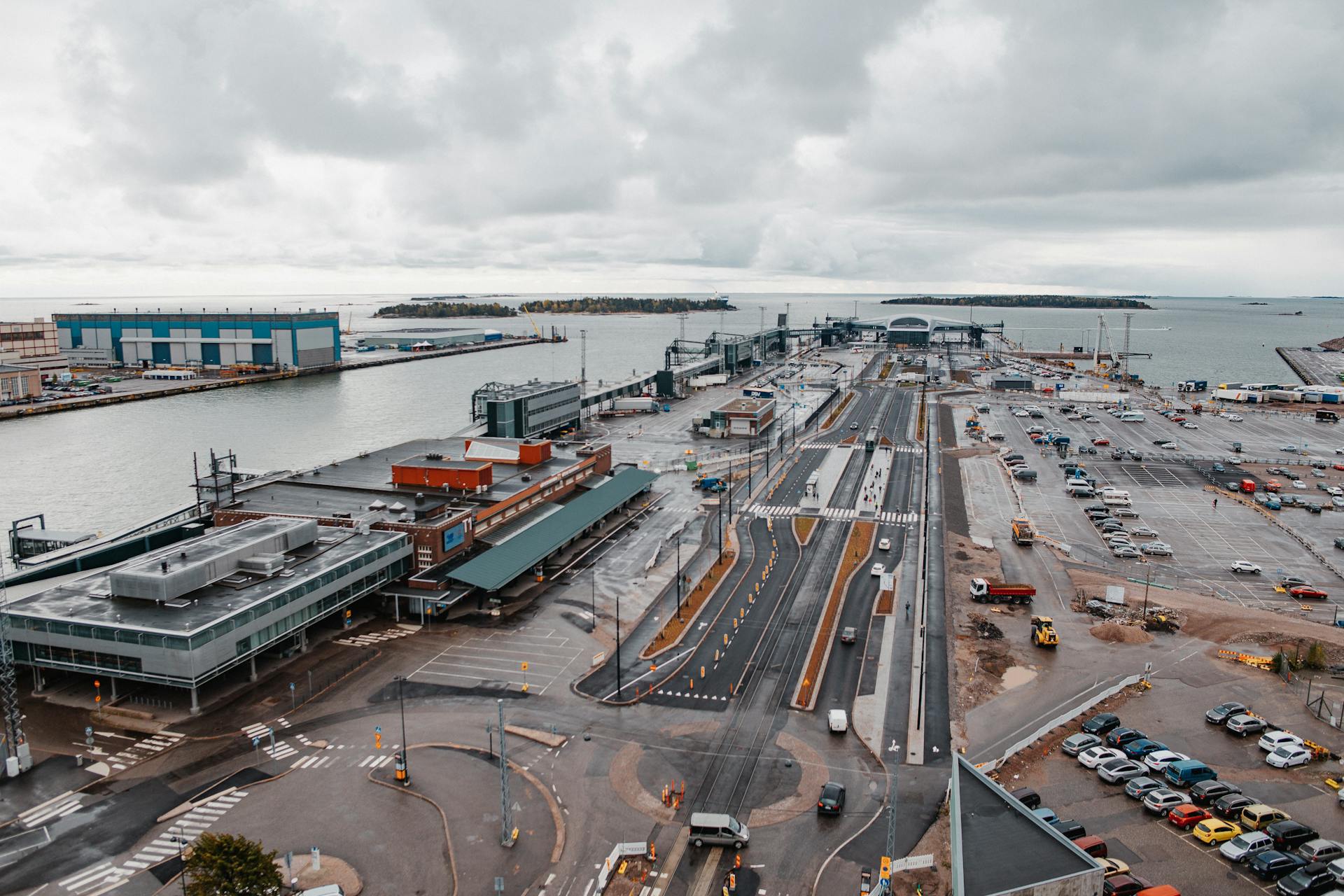
In June 2002, Canadian engineering and construction firm SNC-Lavalin was invited to carry out a feasibility study with funding from the Canadian International Development Agency.
The study concluded that the port could be feasibly developed in three stages costing US$1.7 billion. It recommended a joint venture between the Sri Lanka Ports Authority and a private consortium to undertake the project under a build–own–operate–transfer arrangement.
A steering committee of the Ports Authority rejected the report as being non-comprehensive and lacking in primary research.
The recommendation to begin container operations at the first stage of the project was criticized for ignoring the potential impact on existing operations at the Port of Colombo.
Canada was concerned about financing the project due to Sri Lankan domestic politics, which ultimately stalled the project's advancement.
Sri Lanka's Sub-Continent Gateway
The Hambantota Port project is a significant development in southern Sri Lanka, with a third phase expected to be completed by 2023 and adding a dockyard.

The project's ambitious plans include setting up a tax-free zone near the port area for shipbuilding, repairing, and warehousing, with an estimated investment of $550m.
A variety of industries will be supported by the port, including cement grinding, storage, and bagging facilities, fertiliser manufacturing, storage, and packaging plants, and LP Gas distribution facilities.
The port's development has been a long time coming, with the first feasibility study conducted in June 2002 by Canadian engineering and construction firm SNC-Lavalin.
The study recommended a joint venture between the Sri Lanka Ports Authority and a private consortium to undertake the project under a build–own–operate–transfer arrangement.
However, the recommendation was rejected by the Ports Authority's steering committee, which found the report to be non-comprehensive and lacking in primary research.
The first phase of the port was financed by the Chinese government with a 15-year commercial loan from China Exim, which lent US$306.7 million (85% of the estimated total cost).
The loan carried a 6.3% interest rate and specified China Harbour Engineering Company, a state-owned enterprise, as the construction contractor.
Related reading: China Sea Ports
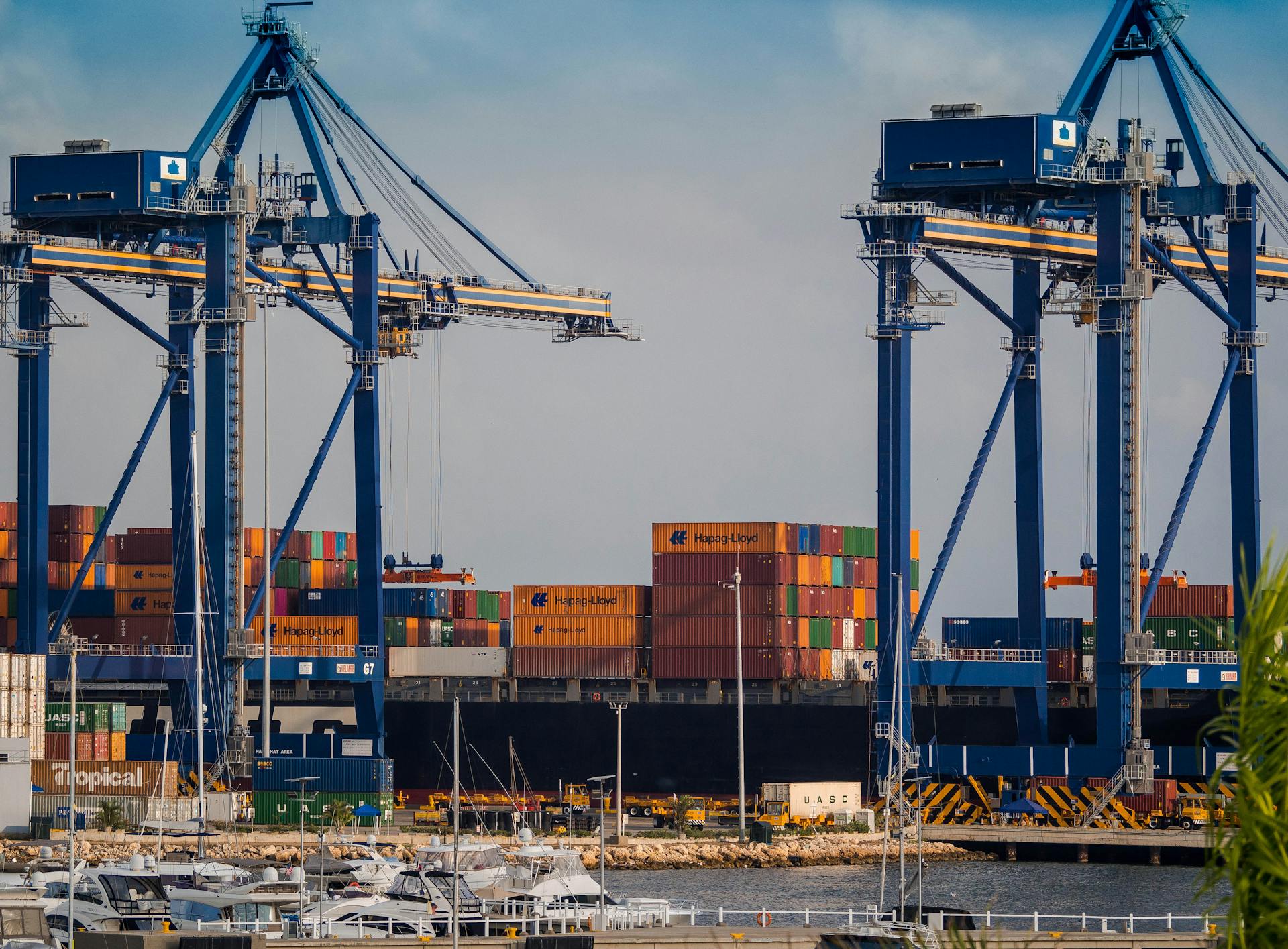
The first phase of the port was inaugurated on 18 November 2010 by President Mahinda Rajapaksa, whom the port was named after.
A $76.5-million bunker terminal was built as part of the first phase, with an initial capacity of 500,000 tonnes, and included LPG tanks and fuel tanks for ships and aircraft.
International Partnerships
China played a crucial role in funding the Hambantota International Port project after India declined to provide support.
Sri Lanka sought funding from China in 2005, marking the beginning of a significant partnership between the two countries.
In 1997, China Huanqiu Contracting and Engineering Corporation, a subsidiary of China National Petroleum Corporation, started doing business in Sri Lanka.
The company became a contractor at Hambantota after the Sri Lankan and Chinese governments agreed in 2005 to facilitate Chinese companies' involvement in the port's refueling facilities and oil tank projects.
A visit by Sri Lankan foreign minister Mangala Samaraweera to China in July 2006 led to an agreement between the two countries to encourage Chinese companies to participate in the port project.
In February 2007, Sri Lankan President Rajapaksa visited China, resulting in China's decision to fund the port development.
Additional reading: China Automated Ports
Location and Plans
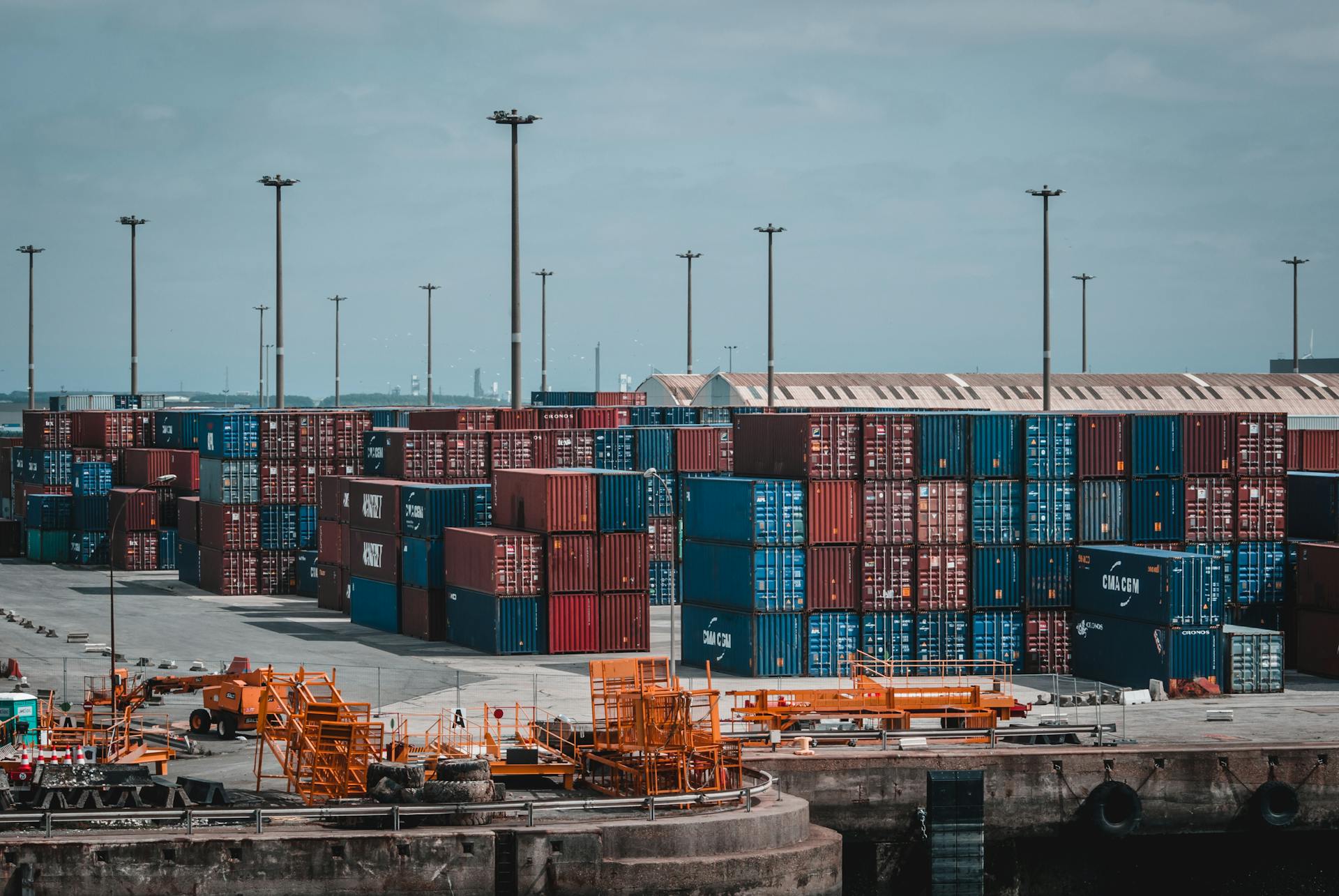
Sri Lanka is strategically located along a key shipping route that connects Asia and Europe, with an estimated 36,000 ships passing through annually.
This location provides a unique opportunity for the Hambantota International Port to relieve pressure on the Colombo port.
A new port will help ships that normally take three-and-a-half-day detours to receive services such as refueling, maintenance, logistics, and buying provisions and medical supplies.
The Sri Lankan government has announced plans to relocate its naval base from Galle to Hambantota, which will likely have a significant impact on the port's operations.
Here's a breakdown of the different coasts of Sri Lanka, where ports can be found:
The relocation of the naval base to Hambantota is expected to bring significant benefits to the port, including increased efficiency and reduced congestion.
Construction and Phases
The construction of Hambantota International Port was a significant undertaking that involved the Sri Lankan government contracting with China Merchants Group to build the port in two phases.
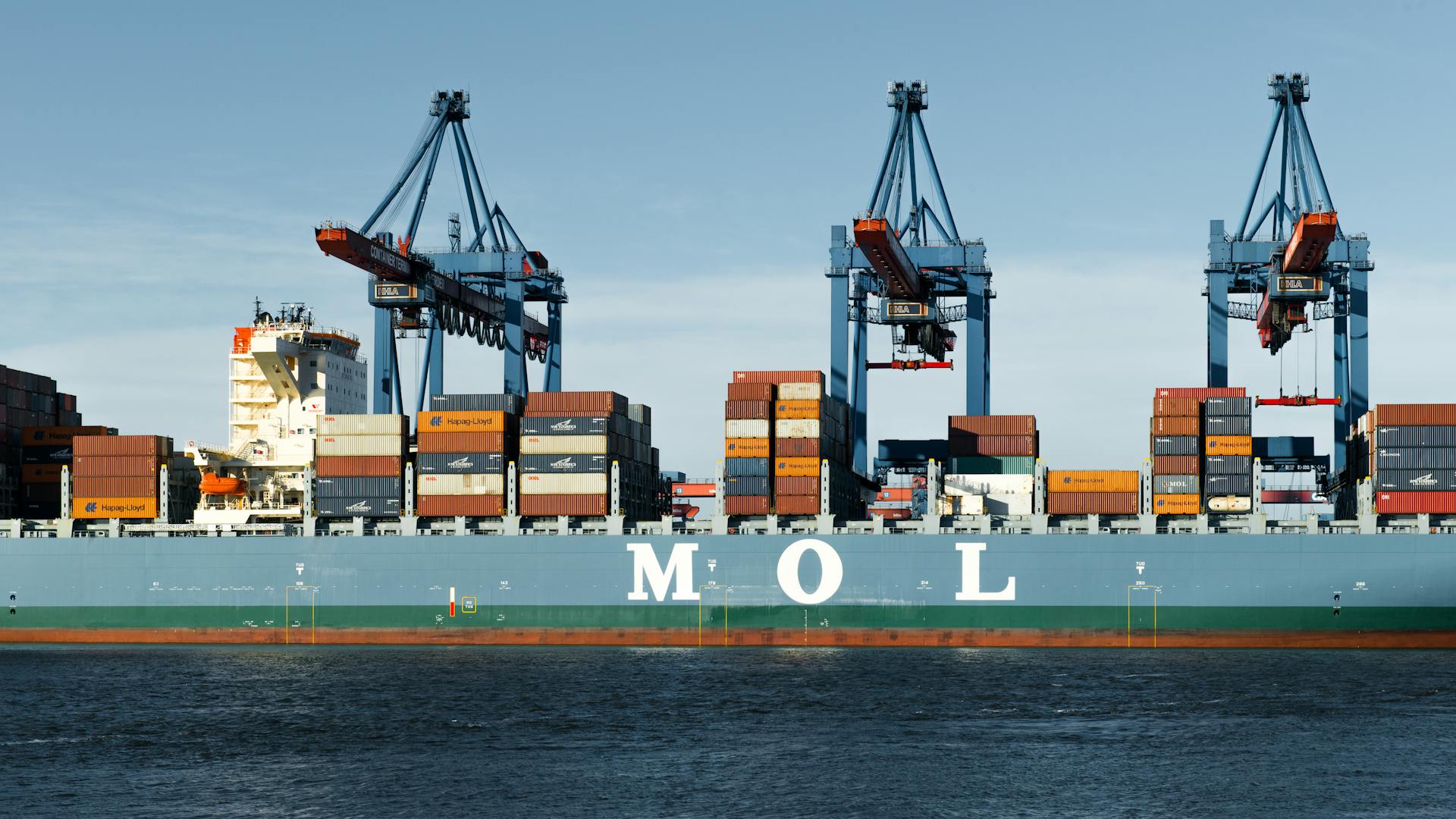
The first phase was financed by a 15-year commercial loan from China Exim, which lent US$306.7 million, while the Sri Lanka Ports Authority bore the rest of the estimated total cost. The loan carried a 6.3% interest rate and specified China Harbour Engineering Company as the construction contractor.
A $76.5-million bunker terminal was built during this phase, with an initial capacity of 500,000 tonnes, and was fitted with LPG tanks and fuel tanks for ships and aircraft, as well as ship repair, shipbuilding and crew change facilities. The first phase of the port was inaugurated on 18 November 2010 by President Mahinda Rajapaksa.
Second Feasibility Study
The second feasibility study was commissioned in 2005 by the newly elected Mahinda Rajapaksa administration, who had campaigned on a promise to revitalize Hambantota's economy.
The study was conducted by Danish consulting firm Ramboll, which reached conclusions similar to those from the first feasibility study by SNC-Lavalin in 2002.

Ramboll recommended that the Hambantota port bring in revenue by allowing the transport of non-containerised cargo before expanding to handle cargo containers, allowing the Port of Colombo to reach its capacity.
The Rajapaksa administration approached the United States and India with the Ramboll study, seeking funding for the port project, but both countries declined.
This second study was a significant step towards the development of the Hambantota port, but it also highlighted the challenges and complexities involved in bringing the project to fruition.
For another approach, see: Total Cargo Ny Nj Port Complex
Construction
The Sri Lankan government contracted with China Merchants Group to build the port. This partnership was a significant step in the port's construction.
Construction of the port was done in two phases. This phased approach allowed for a more organized and efficient construction process.
The port's construction was a massive undertaking that required significant investment and planning. China Merchants Group brought their expertise and resources to the project.
The second phase of construction began in 2012. This phase was also a major milestone in the port's development.
First Phase
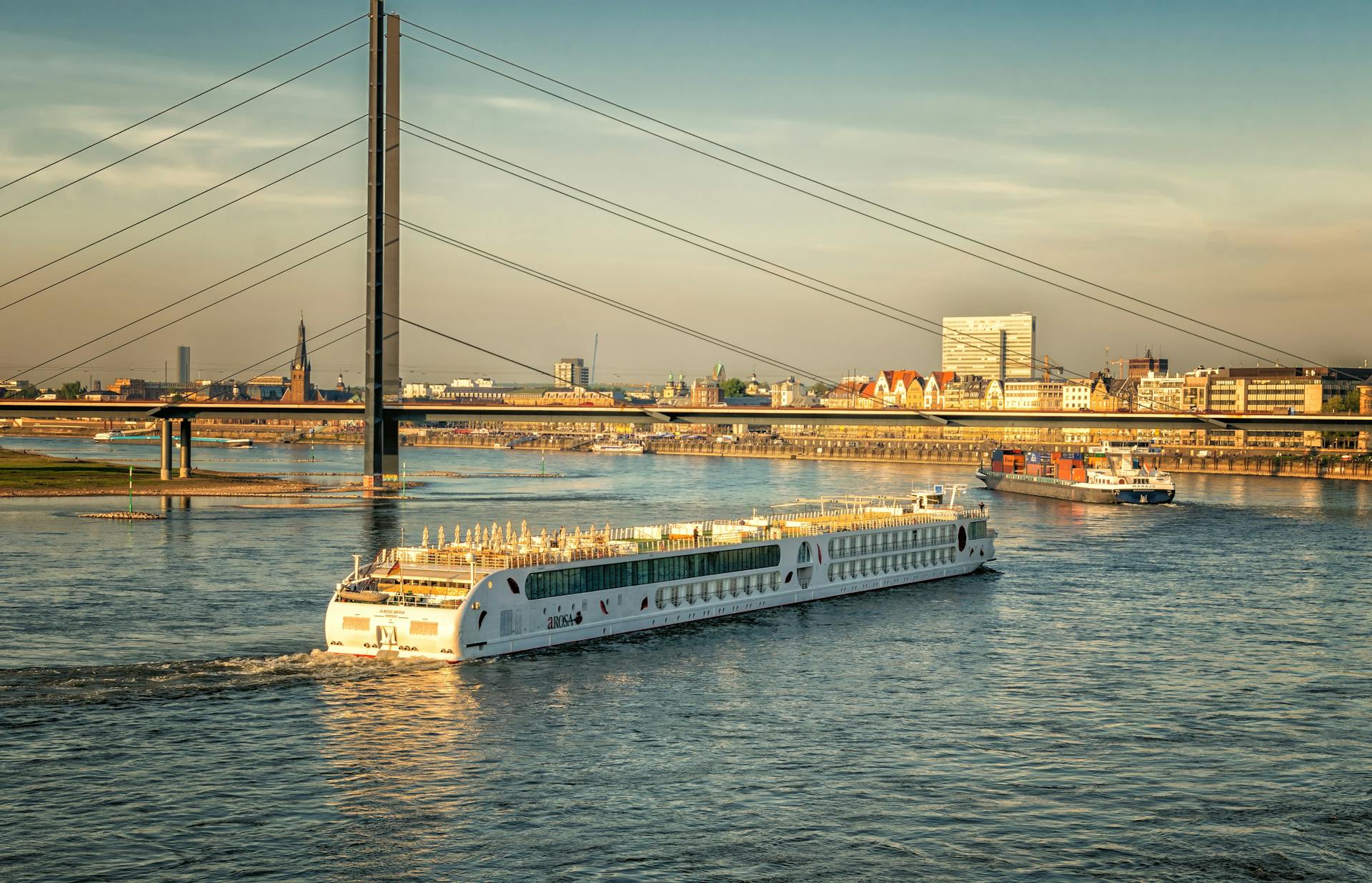
The first phase of the port was a significant milestone, and it was financed with a 15-year commercial loan from China Exim worth US$306.7 million.
The loan carried a 6.3% interest rate, which is a relatively standard rate for such a long-term loan. China Harbour Engineering Company, a state-owned enterprise, was specified as the construction contractor.
A $76.5-million bunker terminal was built as part of the first phase, with an initial capacity of 500,000 tonnes. This terminal was equipped with LPG tanks and fuel tanks for ships and aircraft.
The first phase also included ship repair, shipbuilding, and crew change facilities, which are essential for the smooth operation of a port.
Operations and Management
The SLPA made a strategic decision to divert all vehicle shipments to the Ruhunu Magampura Mahinda Rajapaksa International port on May 31, 2012, to alleviate congestion at Colombo Harbour.
This move marked the beginning of a significant shift in the port's operations, with the first transshipment operations commencing on June 6, 2012, with the arrival of the N4K FRICIA ship from Japan and the Ellison Sun from Chennai Harbour, India.
The port has since seen a substantial increase in vehicle transshipments, with the number of vehicles handled at Hambantota crossing the 100,000 mark in the first nine months of 2014, a 300% increase compared to the same period in 2013.
For another approach, see: Port of Aberdeen South Harbour
Operation under JV
Operation under JV is all about working together with your joint venture partner to achieve common goals. This requires a high level of trust, communication, and coordination between the two parties.
Clear roles and responsibilities are essential to avoid confusion and overlapping work. In a JV, each partner brings their unique strengths and expertise to the table, so it's crucial to define and respect each other's roles.
Decision-making processes should be outlined in the JV agreement to ensure that both parties are on the same page. This helps prevent conflicts and ensures that decisions are made in the best interest of the joint venture.
Regular meetings and updates are vital to maintain open communication and address any issues that may arise. This can be done through scheduled calls, emails, or in-person meetings.
The JV agreement should also specify how profits and losses will be divided, as well as how disputes will be resolved.
Readers also liked: Intergovernmental Agreement on Dry Ports
Operations
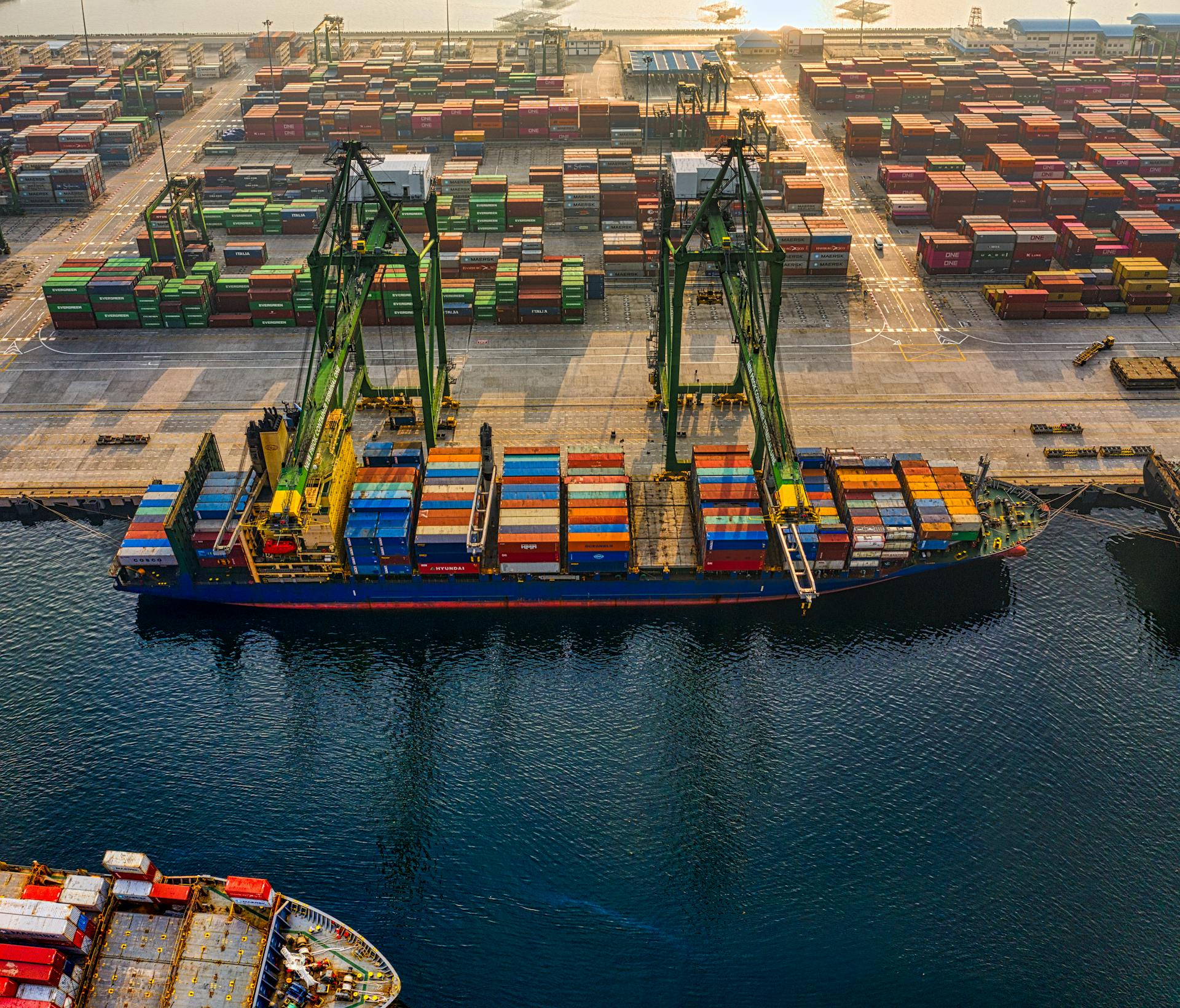
The Port of Hambantota has been a game-changer for Sri Lanka's logistics scene. It officially started transshipment operations on June 6, 2012, with the N4K FRICIA ship from Japan and the Ellison Sun from Chennai Harbour, India.
The port has seen a significant surge in vehicle shipments, with over 100,000 vehicles handled in the first nine months of 2014, a 300% increase from the same period in 2013. The number of ship calls also more than doubled to 161 during this time.
Japanese, South Korean, and Indian car makers have been major users of the port, with Hyundai being the biggest user, shipping 15,000 units a month once more yard space is available. The Hyundai plant near Chennai is a key contributor to the port's traffic.
The port's capacity to handle large shipments was put to the test in April 2017, when the world's largest pure car and truck carrier, the MV Hoegh Trigger, made its maiden call at the Port of Hambantota. This historic landmark marked a significant milestone for the port.
You might enjoy: Alaska Car Transport Tacoma Port
Services and Features
Hambantota International Port offers a range of services and features that make it a hub for trade and commerce in the region.
The port has a Liquid Petroleum Gas (LPG) terminal operated by LAUGFS Holdings, which imports butane and propane and produces LPG for domestic sale or re-export.
This terminal has handled a significant volume of LPG, with over 413,000 metric tonnes handled within the first 14 months, and exports to countries like Bangladesh, Maldives, and India making up 60% of that volume.
Additionally, the port is also home to a state-owned LPG terminal operated by Litro Gas, with a storage capacity of 3,000 metric tonnes.
Facilities
Sri Lanka has invested heavily in upgrading its port facilities, with a $550 million tax-free port zone set up outside the port in 2016.
This zone is a significant development for the country's economy, and it's not the only major investment in the area. Sinopec's Sri Lankan unit invested $5 million on a tanker that flies the Sri Lankan flag in 2020.

The tanker is used to supply very low sulphur fuel oil (VLSFO), a key service provided by Lanka Marine Services (LMS) in partnership with Sinopec. This service is essential for reducing emissions and improving air quality.
LAUGFS Holdings opened a Liquid Petroleum Gas (LPG) terminal in July 2019, which has already handled 413,000 metric tonnes of LPG in its first 14 months of operation.
Sri Lanka's Bunkering
Sri Lanka's bunkering services are a vital component of the country's maritime industry.
The country's strategic location in the Indian Ocean makes it an ideal hub for bunkering operations, with many major ports and terminals offering high-quality fuel services.
Sri Lanka's bunkering services cater to a wide range of vessels, from tankers to container ships.
The country's fuel quality meets international standards, with many bunkering facilities offering high-sulfur and low-sulfur fuel options.
Sri Lanka's bunkering services are also known for their competitive pricing and efficient delivery systems.
The country's major ports, including the Colombo Port and the Galle Port, have invested heavily in modernizing their bunkering facilities to meet the growing demand for fuel services.
Future Developments for Southern Sri Lanka
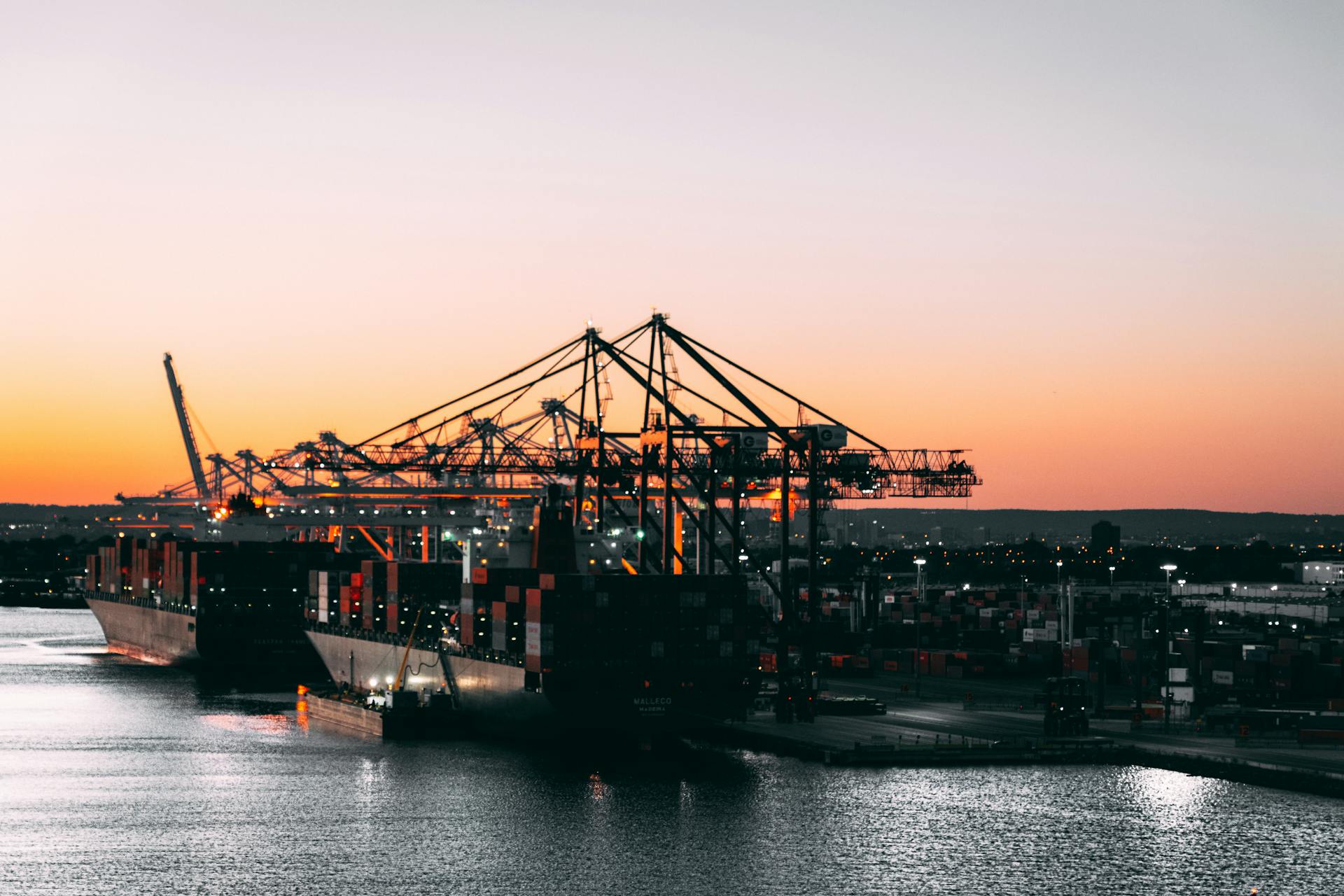
The Hambantota Port in southern Sri Lanka is undergoing significant developments to enhance its capabilities and attract more trade. The third phase of the project is expected to be completed by 2023.
A major addition to the port will be a dockyard, which will further boost its cargo handling capacity. This will be a game-changer for the port's operations and efficiency.
A tax-free zone is being set up near the port area, specifically for shipbuilding, repairing, and warehousing. This zone is expected to attract a significant investment of $550m.
The port area will also feature various facilities, including cement grinding, storage, and bagging facilities, as well as a fertiliser manufacturing, storage, and packaging plant.
Frequently Asked Questions
Who owns the Hambantota port?
The Hambantota International Port is primarily owned by China Merchant Port Holdings (CMPort), which holds 85% of the shares. The port is leased to CMPort for 99 years by the Government of Sri Lanka.
Which port of Sri Lanka handed to China?
The Hambantota International Port in Sri Lanka was leased to China Merchant Ports for 99 years. This significant deal highlights Sri Lanka's strategic port partnerships.
What did China do to Sri Lanka?
China loaned Sri Lanka money to build the Hambantota Port, but Sri Lanka struggled to repay the debt, leading to the port being leased to China.
What is the old name of Hambantota?
Hambantota was previously known as Mahagama, Ruhuna, and Dolos dahas rata. It was also part of the ancient Kingdom of Sri Lanka in the north central region of Anuradhapura.
Sources
- https://en.wikipedia.org/wiki/Hambantota_International_Port
- https://www.beijing.embassy.gov.lk/embassy/invest_internationalport
- https://brisl.org/hambantota-port-and-bunkering/
- https://www.ship-technology.com/projects/port-of-hambantota/
- https://www.insuranceday.com/LL1127423/Sri-Lankas-Hambantota-International-Port--Gateway-to-the-sub-continent
Featured Images: pexels.com


